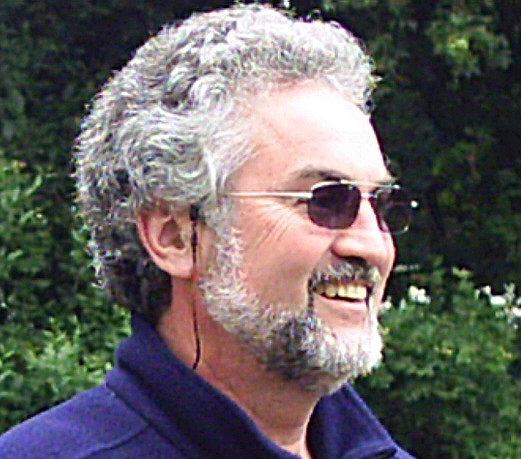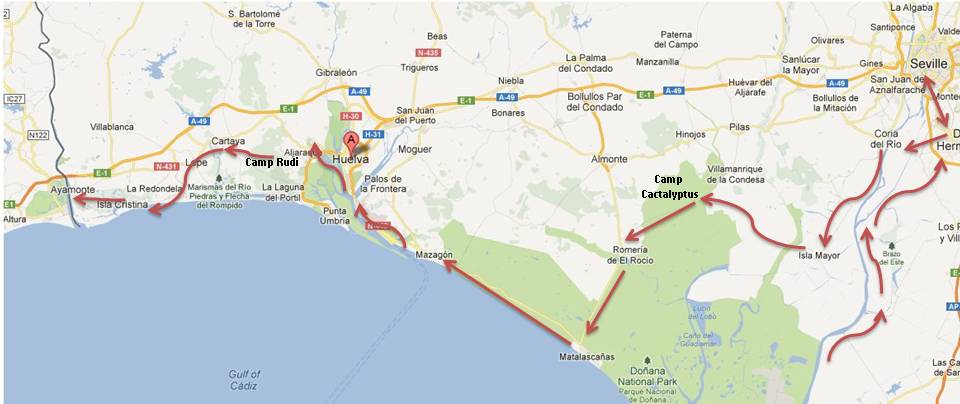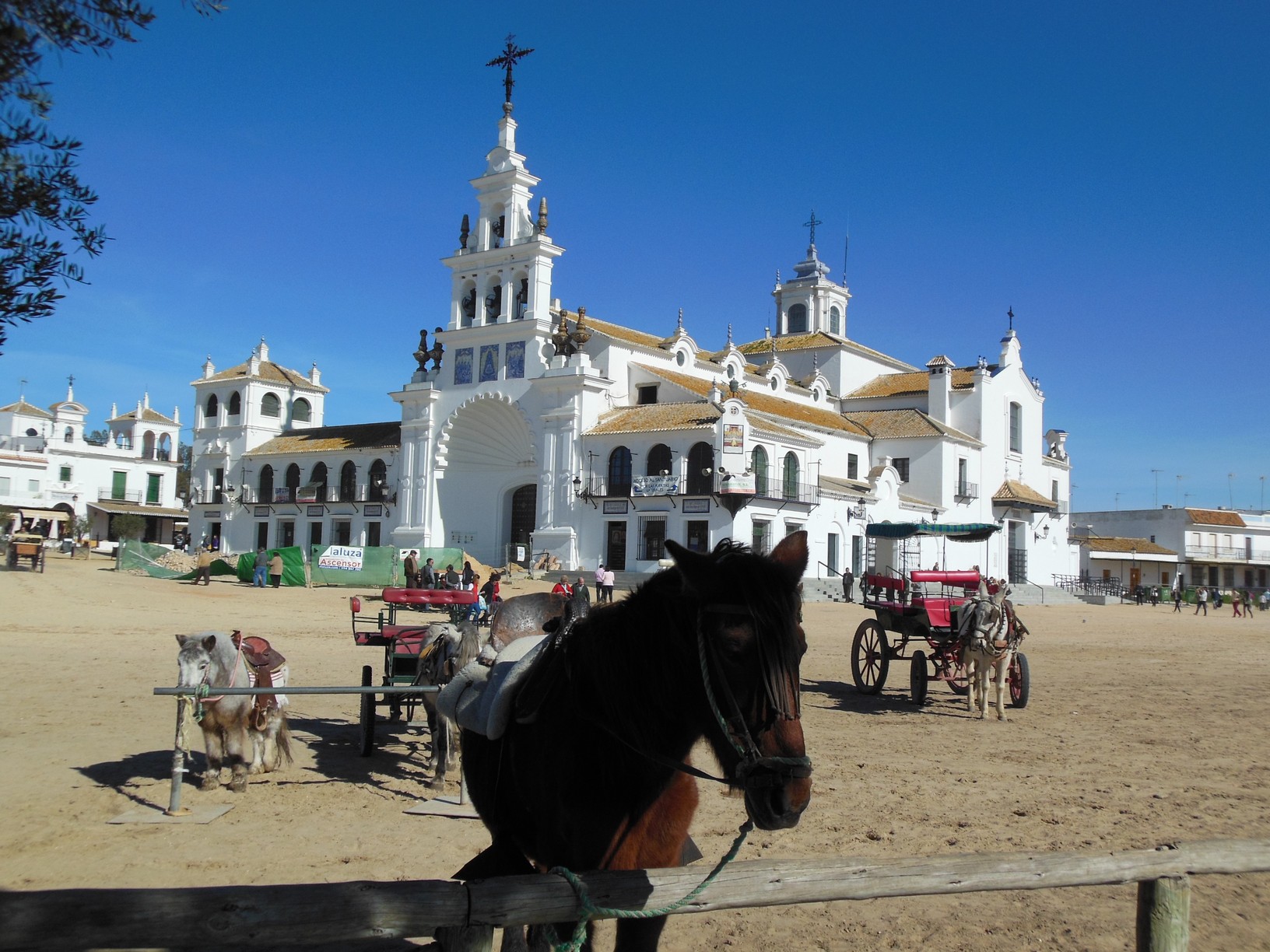|
Sometimes it is difficult to find a place to camp. From the camping place at Dos Hermanas near Seville to El Rocio Camping, it was over 100 kilometers. Therefore, we had to improvise and find a place somewhere in the wilderness. After many miles of swamps and canals with only wet ground and small brush, we finally saw a small forest at an intersection. We pushed our bikes into the forest and finally found a flat spot next to a cactus fence under the eucalyptus trees. Of course, we named it Camp Cactalyptus.
We said, “nobody will ever find us here.” 10 minutes after we pitched the tent, the owner found us while walking through the woods with his wife. He appeared nervous when he saw us, so I walked up to him with a big smile and greeted him. “Buenos Tardes” I said and continued to explain to him that we were tired and needed a place to sleep for the night. “Solo una noche?” (“Just one night?”) he asked. “Si” I confirmed it and he was happy. We exchanged a bit more friendly chatter and said good night.
I have yet to meet someone who wanted me to leave when I slept on their property. If I had known where to ask, I would have asked. There was no “keep out” sign, so I had assumed it was public property.
|



